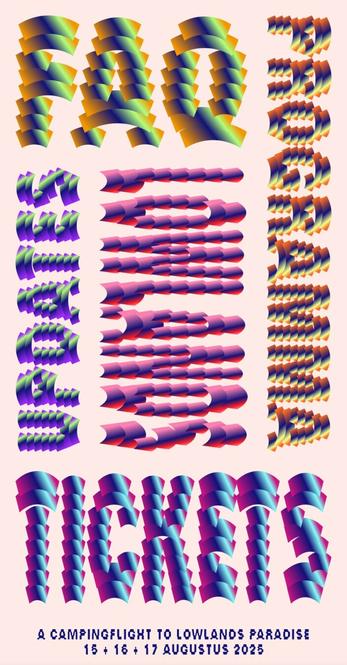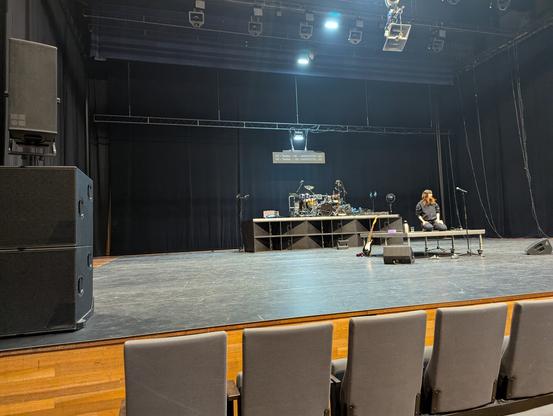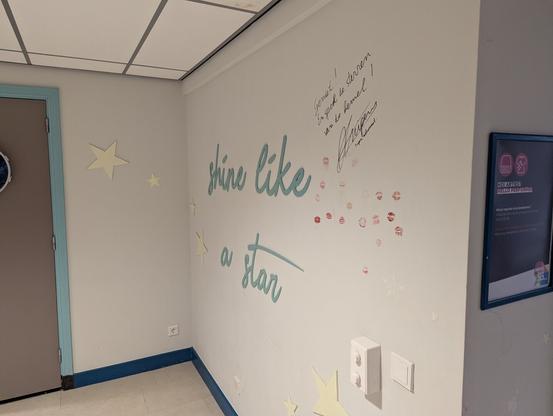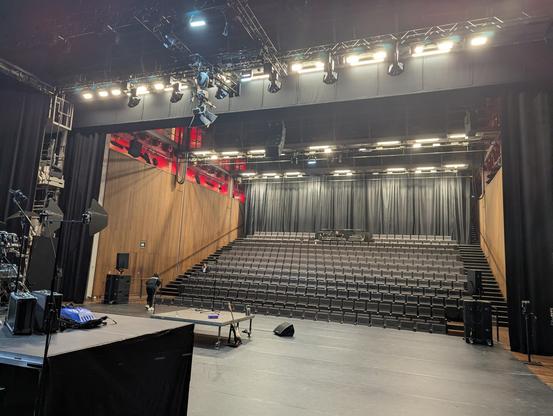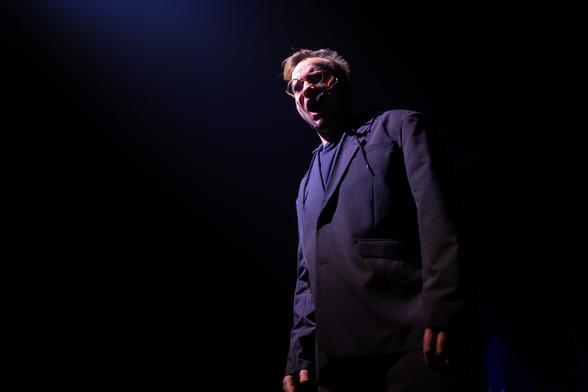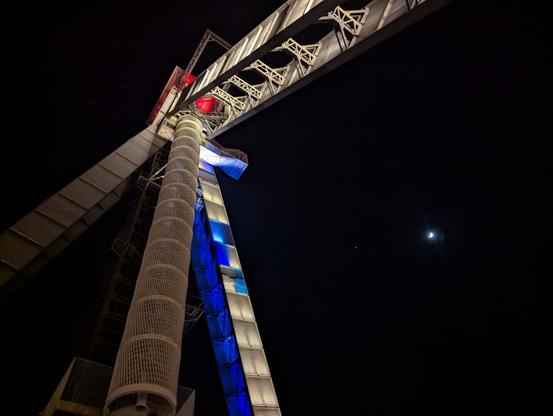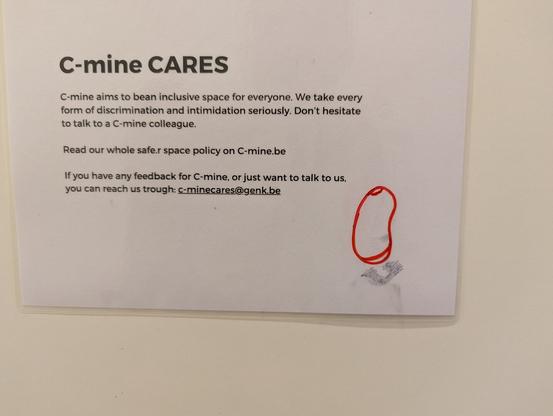🇺🇦 #NowPlaying on BBC #Radio3's #ThroughTheNight Luigi Dallapiccola, Netherlands Chamber Choir & Eric Ericson: 🎵 2 Cori di Michelangelo Buonarroti il Giovane - set 1 for unaccompanied chorus #BBCRadio3 #LuigiDallapiccola #NetherlandsChamberChoir #EricEricson
#NetherlandsChamberChoir
🇺🇦 #NowPlaying on BBC #Radio3's #ThroughTheNight Netherlands Chamber Choir, Jacobus Clemens non Papa & Paul Van Nevel: 🎵 Carole magnus eras #BBCRadio3 #NetherlandsChamberChoir #JacobusClemensnonPapa #PaulVanNevel
🇺🇦 #NowPlaying on BBC #Radio3's #ThroughTheNight Peter Phillips, Jan Pieterszoon Sweelinck & Netherlands Chamber Choir: 🎵 Psalm 110: Le Toutpuissant a mon Seigneur et maistre #BBCRadio3 #PeterPhillips #JanPieterszoonSweelinck #NetherlandsChamberChoir
🇺🇦 #NowPlaying on BBC #Radio3's #ThroughTheNight Jan Pieterszoon Sweelinck, Netherlands Chamber Choir & Philippe Herreweghe: 🎵 Regina Coeli #BBCRadio3 #JanPieterszoonSweelinck #NetherlandsChamberChoir #PhilippeHerreweghe
Today I'll be performing on the famous Dutch festival Lowlands... Singing my first and probably only ever solo there, in fact. Life takes you some interesting places sometimes.
#Hardkoor #Netherlandschamberchoir #singing #classicalsinging #lowlands #lowlandsfestival #music #performance
Huang Ruo: grief not quite palpable in ‘Between Two Lights’
Halfway through the third movement, attention slackens. People look at the ceiling, run their hands through their hair, shift in their seats. We are about three quarters of an hour in and have three more to go in Huang Ruo‘s six-part mourning piece Between Two Lights, during its world premiere at Amsterdam’s Muziekgebouw aan ‘t IJ on Thursday 22 May.
Huang Ruo’s publisher Ricordi lists this as ‘opera’, though there are no vocal soloists, orchestra or ensemble. The cast consists only of the Netherlands Chamber Choir and two percussionists. Ruo himself conducts, while dancer and choreographer Grace Ellen Barkey acts as a jack-of-all-trades.
She drags spotlights and projection screens onto the stage, snuggles up to the singers, pushes them in certain directions, dances in front of and behind the screens and between the singers. This multitasking is in itself a clever idea of the directors (Aïda Gabriëls and Tido Visser), but Barkey’s constant meddling works rather more as a jammer than adding a deeper layer of meaning.
Light is life
While the audience trickled in, she already acted as ‘moderator’ in a discussion about death between singers and musicians. One finds it frightening because any day could be her last, while another experiences the freedom to fully enjoy everything that comes his way. It remains guesswork whether their texts are spontaneous or rehearsed.
In a brief interview with Barkey, Huang Ruo tells how he travelled to China during the corona pandemic to say goodbye to his dying mother. During the mandatory quarantine, he immersed himself in the Heart Sutra, a Buddhist text on emptiness. From this, he used five parts for his libretto, while he based the sixth and final part – ‘Towards Rebirth’ – on a poem of his own.
With a firm voice he demonstrates the desperate cries he uttered during his mother’s funeral. The translation of this reads something like ‘mother, mother, why have you left me?’ Since we regard life as light and at our death we move towards a yet unknown light, he named his piece Between Two Lights. Then he takes his stand behind his lectern on the hall floor; the singers set up and behind an instrument case on stage, Barkey in their midst.
Heavenly singing
It begins beautifully: the choir opens with heavenly singing at a slow pace, simultaneously hinting at Renaissance polyphony and Eastern European folk music, with spicy dissonant harmonies. Then Barkey dazzles us with a spotlight, which she places in the back left corner of the stage. With slight urgency, she leads the singers to that same spot, and carries Ruo’s lectern along, allowing him to keep conducting while positioning himself in front of them, and part 2 begins, ‘Separating from Life’.
The angelic singing continues, albeit now accompanied by slow gong beats. Understandably, Ruo wants to achieve a ritualistic atmosphere, but the somewhat uniform sound world soon loses expressiveness and fails to really move us. In the following ‘Visions of Nirvana’, the vocals become slightly more agile and rhythmic, and we see vivid projections of foliage on screens wheeled onto the stage by Barkey.
Birth is death
It is almost a relief when next appear video projections of people recounting their personal experiences of death. A great-grandfather who was a doctor recognises an inextricable link between birth and death. Not only did he see many babies and newly delivered mothers die, but we also have a first death experience when we leave the womb. A woman wearing a headscarf tells how a daughter could not let her mother go, even though she had long since said goodbye to life; she could not die because she did not want to cause her child grief.
The sections that follow offer more of the same musically, even if we briefly perk our ears to some lively wah-wah effects in the women’s choir in the fourth section and scanned vocals from the men’s choir to almost swinging woodblocks and gongs in the fifth. In the closing ‘Towards Rebirth’, Barkey places an extra spotlight in the right front corner of the stage and literally dances between two lights. Huang Ruo fires his singers to a deafening climax, himself shouting his previously demonstrated call ecstatically above them.
Desolation
Then he extinguishes his iPad and sits down on his conductor’s platform with shoulders drooping, while the choir sings on independently. Their voices slowly fade away into nothingness, accompanied by a whirring bull roarer and a buzzing singing bowl, adding to the ritual atmosphere. The dancer leaves the stage, hands cupped in front of her eyes. Rather than a rebirth, there seems to be immense sadness and desolation.
Huang Ruo’s grief may be genuine, and the last scene definitely has impact, but overall the composer has not quite succeeded in making the feeling of mourning palpable.
Between Two Lights is a production of Muziektheater Transparant & Netherlands Chamber Choir and tours Belgium and the Netherlands through 8 June.
#AïdaGabriel #BetweenTwoLights #GraceEllenBarkey #HuangRuo #MuziektheaterTransparant #NetherlandsChamberChoir #TidoVisser
#singing #choir #professionalmusician #music
https://www.theaterrotterdam.nl/agenda/11691/theater-utrecht-naomi-velissariou-nederlands-kamerkoor/hardkoor
#theatre #music #Rotterdam #discount #hardkoor #netherlandschamberchoir #theaterutrecht #nederlandskamerkoor
The show is pretty hardcore. Would be nice to have some #Fediverse audience!
https://www.nederlandskamerkoor.nl/nl/agenda/hardkoor
Some photos were taken by Juri Hiensch, see the alt text.
#professionalmusician #musiciansofmastodon #musiciansofpixelfed #classicalmusic #contemporarymusic
https://www.nederlandskamerkoor.nl/nl/agenda/hardkoor
#netherlandschamberchoir #choir #theatre #theater #theaterutrecht #singing #professionalmusician #sillyhats #musician #musiciansofmastodon #music #Netherlands
#theatre #music #singing #professionalsinger #classicalmusic #classicalsinging
A productive day yesterday! First a rehearsal with the #NetherlandsChamberChoir and #TheaterUtrecht for the upcoming #concert tour with #Hardkoor, a great performance about #burnout
Then a #singing lesson to work on the #Fauré #Requiem I'm performing Saturday and finally the film showing of the #opera I performed in last summer, called The Master's Voice by Peter Kooreman.
Finally, I started work improving my #website's navigation bar. High time, too! #chonky
Cornelius #Schuyt (1557-1616) Voi bramate, ben mio (1600)
#NetherlandsChamberChoir
cond Paul van Nevel
Choralwiki
https://www.cpdl.org/wiki/index.php/Cornelius_Schuyt
https://youtu.be/7_rUwNozwKk?si=J9H7NFCVycBXzZwo 4:16
Cornelius Floriszoon #Schuyt was the son of Floris Corneliszoon Schuyt (1529/30–1601), organist of two churches in Leiden, the Pieterskerk & the Hooglandse Kerk...
Schuyt pub 4 vol of compositions, w 3 vol of #madrigals. None of his organ music has survived. He died on 9 June 1616 and was buried in the Pieterskerk in Leiden.
Jan Pieterszoon Sweelinck (1562–1621) - Choral Works [Paul Van Nevel] [3/3]
https://youtube.com/watch?v=uDU3ull_6W8&si=1Y0AdLE5aDMsigMP
#ClassicalMusic
#BaroqueMusic
#NetherlandsChamberChoir
#PaulVanNevel
#JanPieterszoonSweelinck
Vol.3
Jan Pieterszoon Sweelinck (1562–1621) - Choral Works [Paul Van Nevel] [2/3]
https://youtube.com/watch?v=kOzwCi7G8WQ&si=IewS-jIQ-ioOGD7O
#ClassicalMusic
#BaroqueMusic
#NetherlandsChamberChoir
#PaulVanNevel
#JanPieterszoonSweelinck
Vol.2
Jan Pieterszoon Sweelinck (1562–1621) - Choral Works [Paul Van Nevel] [1/3]
https://youtube.com/watch?v=7EBlXW-QHwA&si=HrnEkR2gG1NRKmVN
#ClassicalMusic
#BaroqueMusic
#ChoralWorks
#NetherlandsChamberChoir
#PaulVanNevel
#JanPieterszoonSweelinck
Vol.1
